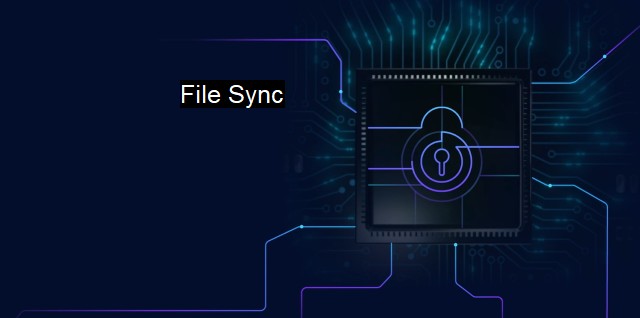What is File Sync?
Securing Your System with File Syncing Practices: A Critical Element in Cybersecurity
File synchronization, commonly known as File Sync, is a critical feature in the business world as well as for individual use. File syncing often involves utilizing software systems to ensure an exact copy of a file or data piece is stored in two or more locations, often simultaneously. These locations can range from diverse storage media such as a computer hard drive, an external hard drive, or cloud-based platforms. file synchronizing ensures that the latest version of a file is universally available the designated areas.File sync can be both a blessing and a chore. On the one hand, synchronized data has several advantages. It facilitates collaboration among colleagues in a work environment, as different people can access up-to-date versions of documents or information from various devices. It assures that data recovery is possible after a device failure; if a computer’s hard drive gets damaged, all the information it contained can be retrieved from another synchronized device or from the cloud. syncing files also mean your vital data are fortified against loss.
On the other hand, data synchronization can pose certain security risks, becoming a point of concern for the cybersecurity industry. Synced files might be susceptible to unauthorized access, modification, or deletion if the right security measures are not place. when a file gets synced, all the other versions of that file across synced locations update automatically. This implies that, if a file infected with a virus or malware gets synced, the infection could spread quickly across all synced devices. Therefore, it is of vital importance to have a stable cybersecurity and antivirus in place while utilizing file syncing.
Cybersecurity measures such as file encryption can protect the privacy and integrity of the synced data, thereby reducing the risk of unauthorized access. Multi-factor authentication and SSH (Secure Shell) keys ensure that only verified users can access the synced files, thereby adding another security layer.
Antivirus programs come into action to safeguard against potential threats that can spread across devices through file synchronization. Virus-infected files can replicate and transmit themselves to other devices using synchronization. If such a virus-infected file gets synced to another device, it can put that device's security at risk, and the repercussions can be quite devastating. Good antivirus software can detect such threats in real-time and even prevent them from syncing.
The antivirus software works by scanning the files before and during synchronization. If a threat is detected, the antivirus program takes the necessary steps to neutralize it, based on its predefined settings and severity of the threat. Basically, the antivirus acts as a watchdog, standing guard over your files during synchronization, ensuring synchronization only occurs in a safe, threat-free environment. This goes a long way toward making the synchronization process even safer.
Additional tools such as VPNs (Virtual Private Networks) help encrypt internet connections, which further secures the process of file syncing, especially when sensitive data is in transmission. Securing your redundant synchronized files mandates the employment of reliable cybersecurity software and antivirus programs, secure internet connections, and careful handling of your private data.
While file synchronization provides multiple benefits like easy data access, quick sharing, and disaster mitigation, it also presents potential risks. These risks can be significantly minimized by employing robust cybersecurity measures and antivirus systems in tandem with careful data handling practices. Thus, file syncing can continue to play its instrumental role in improving productivity and efficiency in both professional and personal use.

File Sync FAQs
What is file sync and how is it important in cybersecurity?
File sync is the process of synchronizing files across multiple devices or locations, ensuring that the latest version of the file is available on all devices. This is important in cybersecurity because it helps maintain consistent and up-to-date versions of files across all devices, reducing the risk of security vulnerabilities and threats.How does file sync help in antivirus protection?
File sync helps antivirus protection by allowing for the automatic and continuous syncing of virus definition updates across all devices. This ensures that all devices have the latest virus definitions and are protected against the latest threats.What are the risks of file sync in terms of cybersecurity?
One of the risks of file sync in terms of cybersecurity is the potential for malware or viruses to be synced across all devices. If one device is infected with malware, it could infect all other synced devices. Additionally, if a device is lost or stolen, any synced files could be accessed by unauthorized individuals.What security measures should be taken when implementing file sync in a cybersecurity plan?
To ensure secure file sync in a cybersecurity plan, it is important to use secure and encrypted cloud storage options, password-protect synced files and folders, implement two-factor authentication, and regularly monitor and review access logs. Additionally, it is important to train employees on safe syncing practices and to limit access to sensitive files to only those who need it.| | A | | | B | | | C | | | D | | | E | | | F | | | G | | | H | | | I | | | J | | | K | | | L | | | M | |
| | N | | | O | | | P | | | Q | | | R | | | S | | | T | | | U | | | V | | | W | | | X | | | Y | | | Z | |
| | 1 | | | 2 | | | 3 | | | 4 | | | 7 | | | 8 | | |||||||